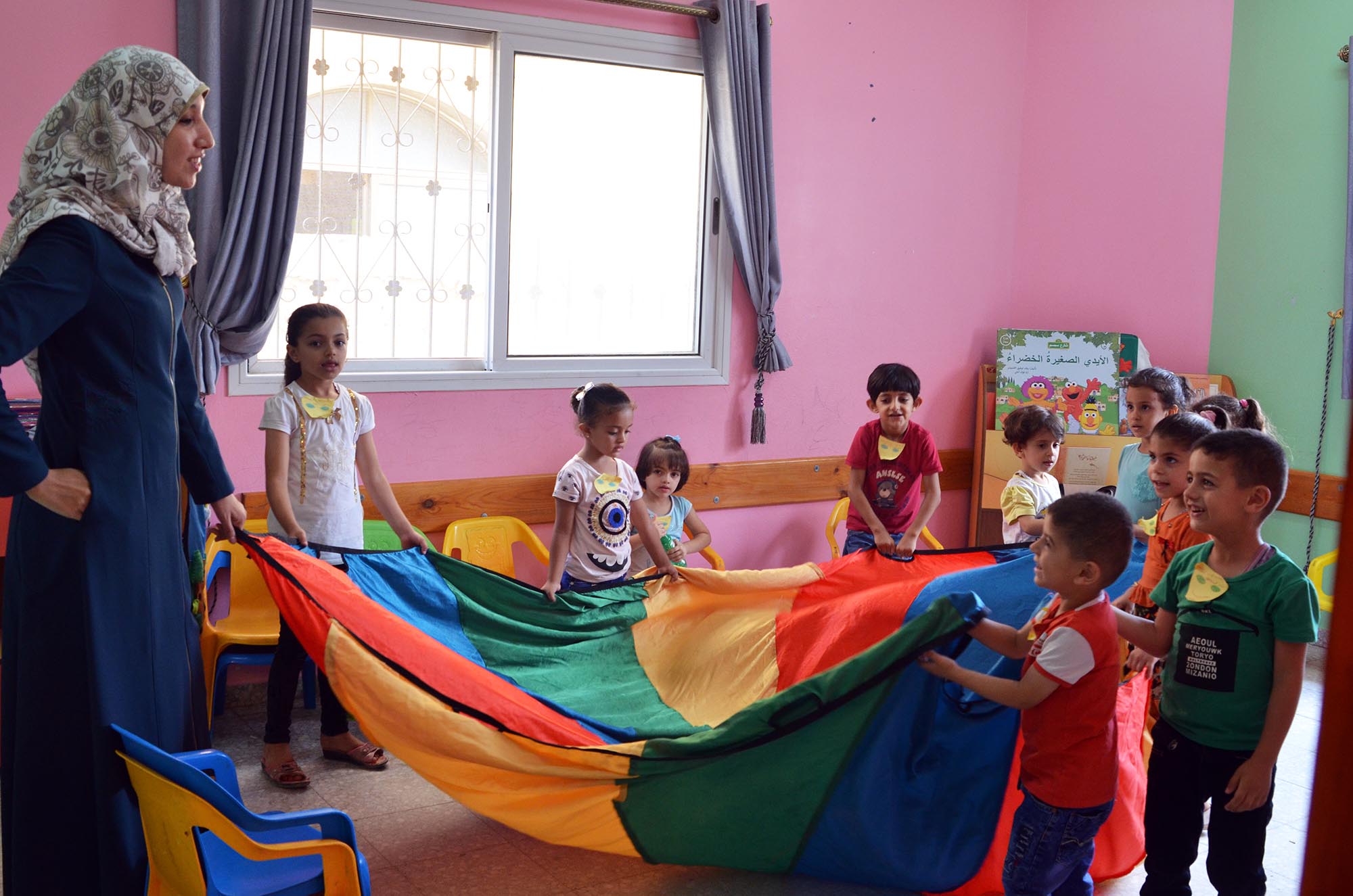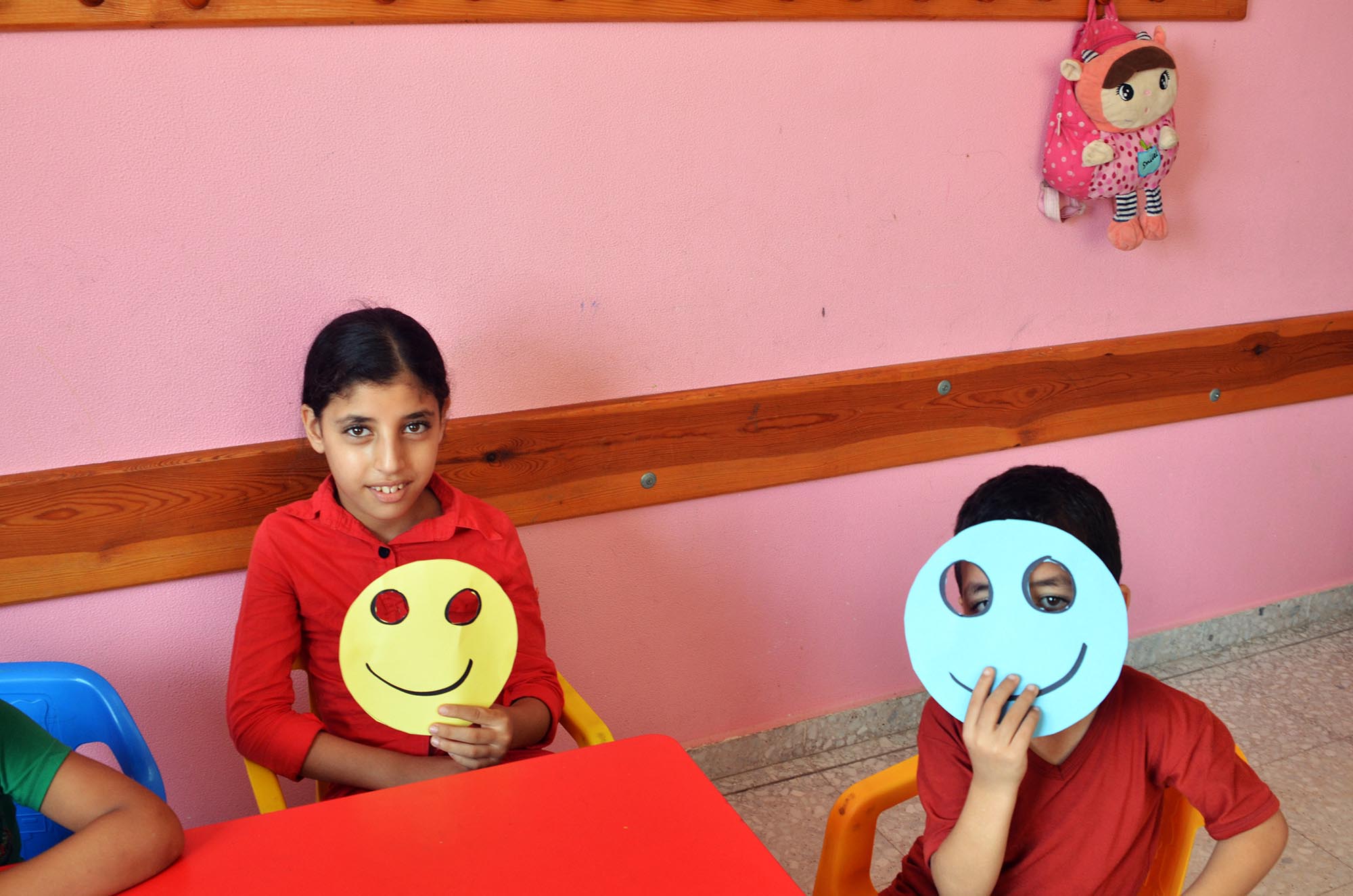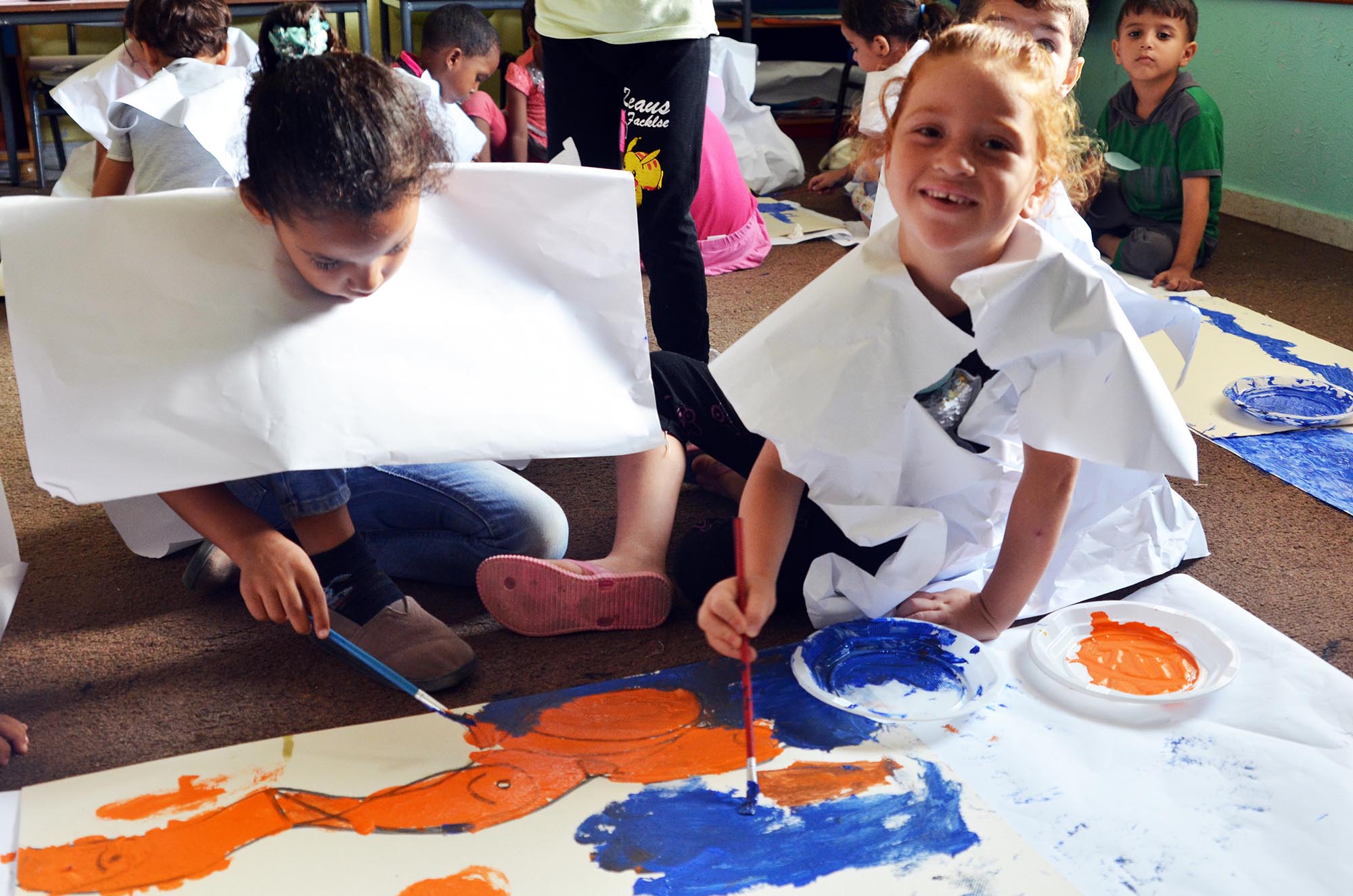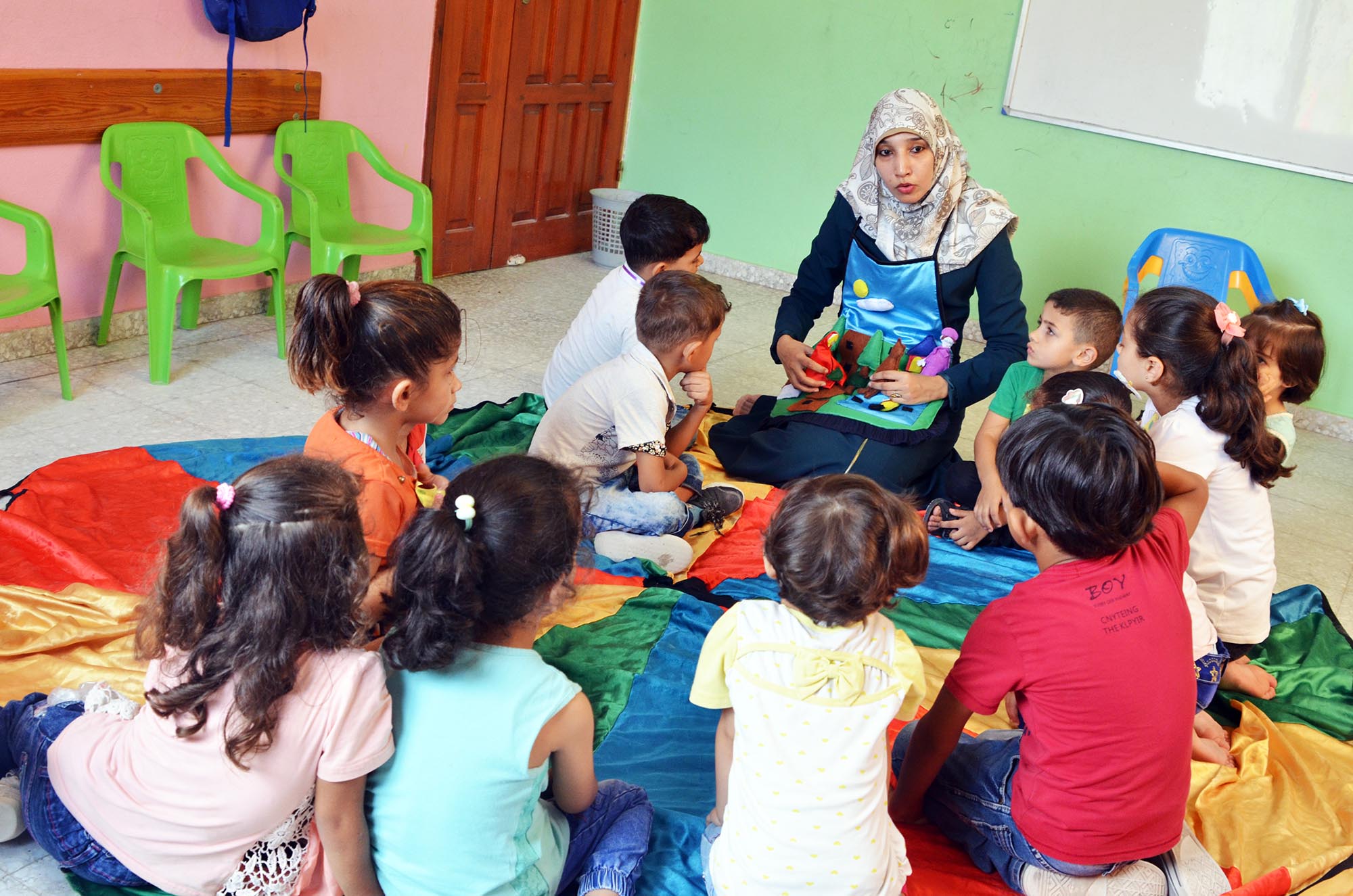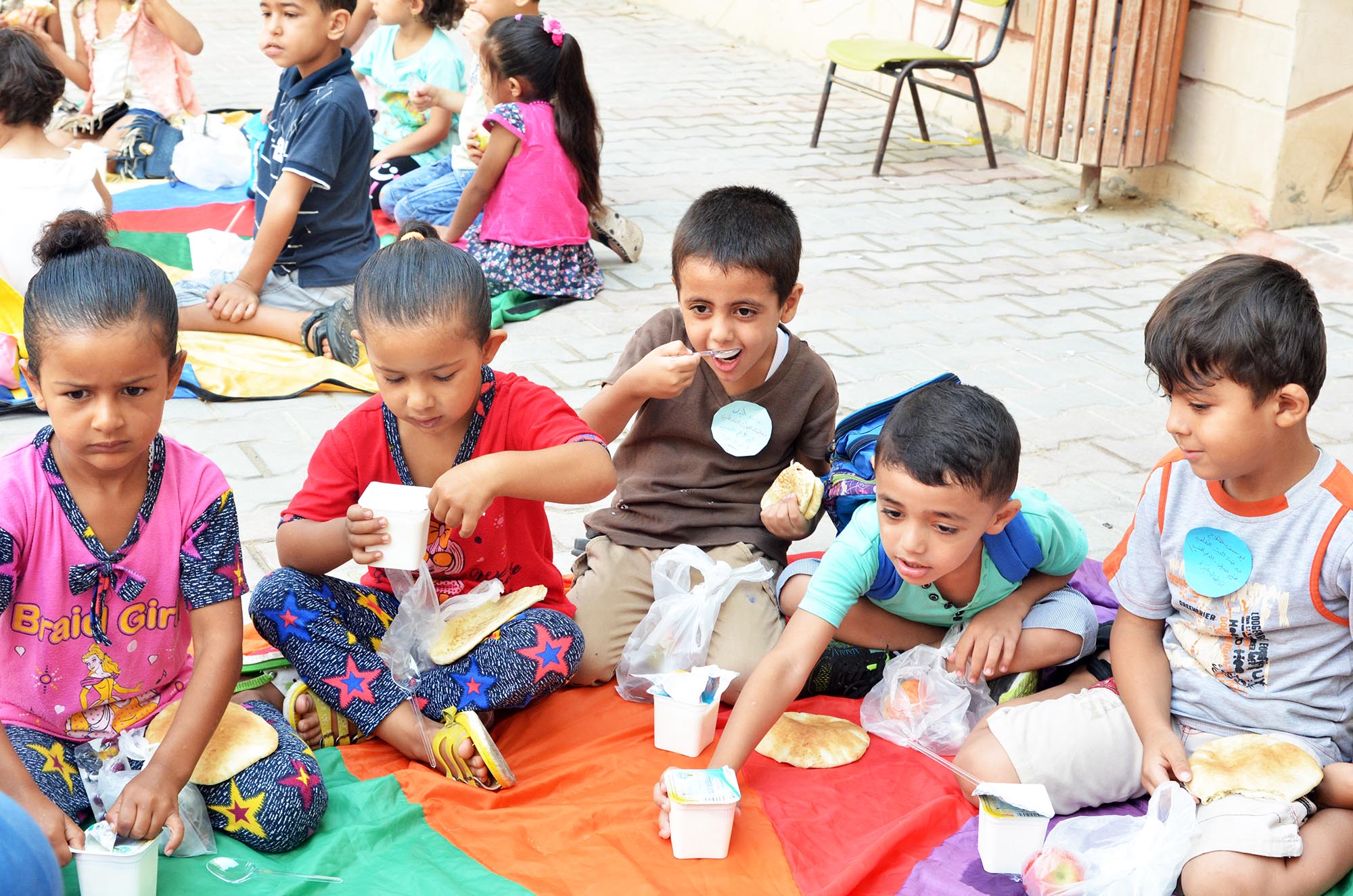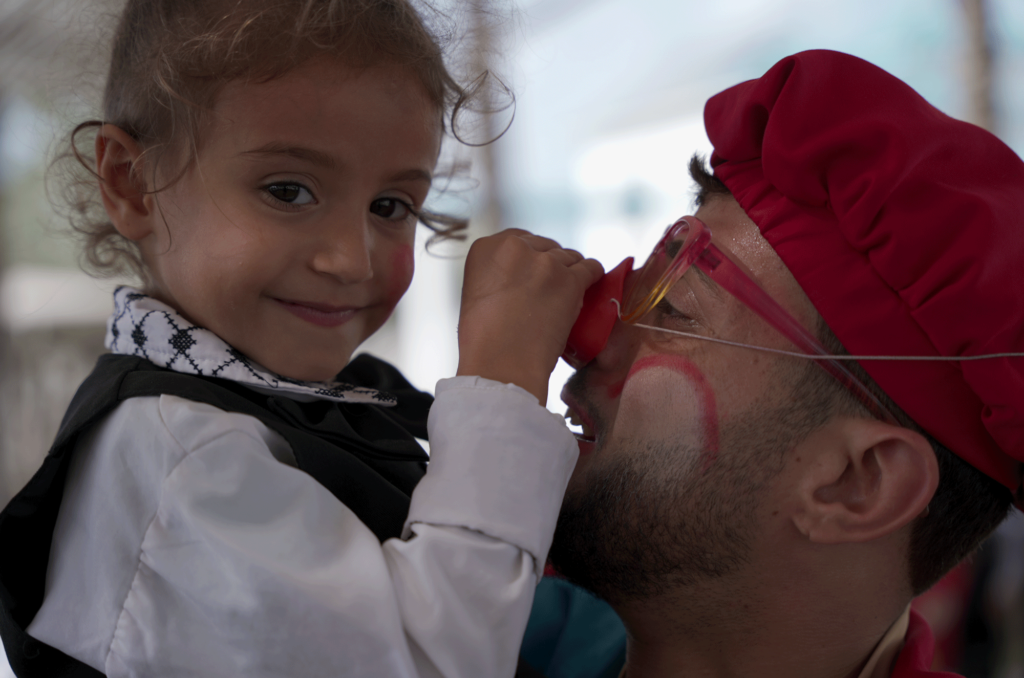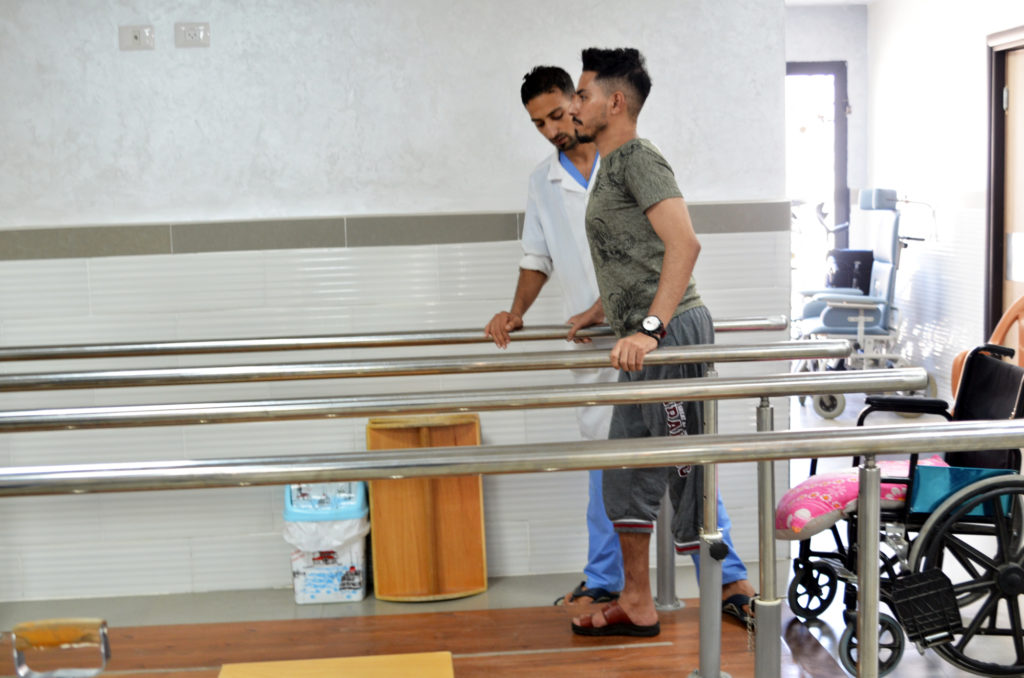COMMUNITY
Gaza Summer Camps for Children: Psychosocial Support & Artistic Self-Expression
Aug, 2018
Happy, angry, sad or tired, summer camps in Gaza take the lead to help children vent their emotions with games, music and expressive arts.
The situation in Gaza is tense and unremitting, so it is very important for a child to find a safe haven, explains Nisreen, a camp teacher. Another camp teacher, Abu Baker, adds, “This year, the camp’s focus is on arts therapy which teaches children stress relief techniques without making them aware of the process.”
“At summer camp, children are removed from reminders of the grim circumstances in Gaza so that they can set aside their fears,” Nisreen says. “Whatever emotions a child is experiencing, they are encouraged to draw a favorite safe place, real or imaginary.” During these camp sessions, Abu Baker underscores the value of working with child caregivers to develop competencies and skills to respond more effectively to the needs of the children.
“Selfie sessions” are an example of one of the many tools used by teachers to share share skills with their students. “We are helping teachers impart positive feelings on the children,” Abu Baker explains. For children, the selfie tool is introduced through games, art projects, crafts, role-playing, and story-telling. The selfie activities encourage the children to process and express their feelings in a healthy way, and to better understand the feelings of others.
“The bottom line is to encourage children to express themselves,” says Nisreen. “Once they do this, they can let out their negative feelings through healthy expression which brings joy.”
Arts & Crafts As A Sress Reliever
Wearing masks of different emotions is another tool used by camp teachers. If a child is upset, they must carry with them masks they made representing other moods. “A child's inner feelings can be symbolized in many ways,” Nisreen says, “perhaps as a tree or a particular animal - anything that might give them joy or allows them to overcome an unpleasant feeling.”
At the arts corner, teacher Nidaa proudly shares the art created by her students. “I asked them to draw straight lines, but I noticed they made a lot of curves. I realized how attached the kids are to the beach since they drew a lot of fish,” she says.
“As long as a child has the opportunity to use their senses, painting, especially with warm colors, will provide comfort,” Nidaa says. “I let the children draw what they see. Even if it seems like an abstract painting. It is an expression of the child’s inner feelings and helps them create good memories.”
Storytelling
Amani, another teacher at the camp, believes reading is another important component of the camp's program. “A successful teacher will always find a way to tell a story to ignite a child's imagination and elicit emotions,” Amani says. “It is also an opportunity for us to listen to our children.”
She explains that by using role playing games, teachers introduce children to the concept of narrative and help them imagine themselves as characters in these stories. While explaining a story about a rooster who finally gets his red comb, Amani notes that stories, “inspire students’ imagination and can teach lessons using subtle metaphors.”
“These camps provide children with opportunities for artistic and emotional expression. They are beneficial since they provide a space for both the children and teachers to release suppressed emotions. When camp ends, we hope everyone comes away with positive emotional coping mechanisms and warm camp memories that can help distract from unpleasant events.” - Abu Baker, camp teacher
With generous funding from the Ross Foundation, Anera has implemented summer camps at ten preschools across Gaza that aim to help train 70 teachers on pedagogical tools that utilize expressive arts to provide psycho-social support for children.

